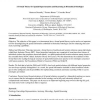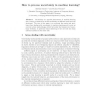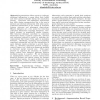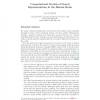129 search results - page 8 / 26 » Modeling how humans reason about others with partial informa... |
ARTMED
2006
13 years 7 months ago
2006
Objective: The objective of this paper is to demonstrate how a formal spatial theory can be used as an important tool for disambiguating the spatial information embodied in biomed...
ESANN
2007
13 years 9 months ago
2007
Uncertainty is a popular phenomenon in machine learning and a variety of methods to model uncertainty at different levels has been developed. The aim of this paper is to motivate ...
IJCAI
2007
13 years 9 months ago
2007
Computers have already eclipsed the level of human play in competitive Scrabble, but there remains room for improvement. In particular, there is much to be gained by incorporating...
AUSDM
2007
Springer
14 years 1 months ago
2007
Springer
Argumentation allows agents to exchange additional information to argue about their beliefs and other mental attitudes during the negotiation process. Utterances and subsequent obs...
ALT
2008
Springer
14 years 4 months ago
2008
Springer
Abstract For many centuries scientists have wondered how the human brain represents thoughts in terms of the underlying biology of neural activity. Philosophers, linguists, cogniti...




